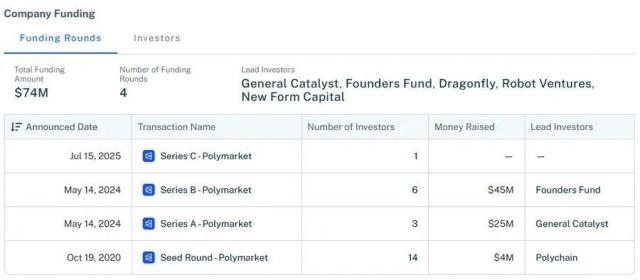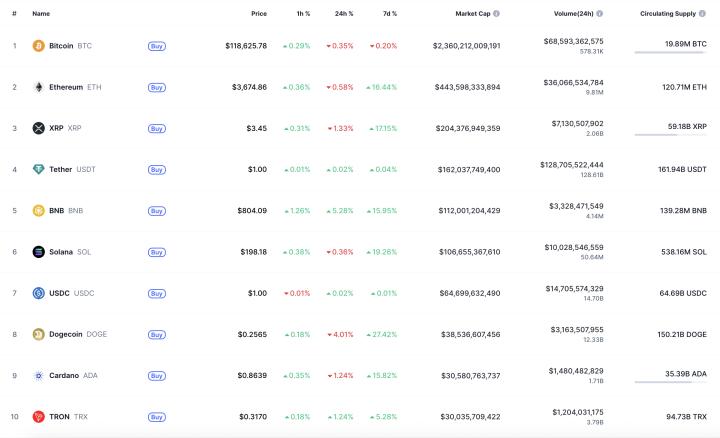Compared to pure asset appreciation, Ethereum is opening its doors to institutions in another way, not only providing stable and sustainable on-chain returns but also transforming these institutional stakers into "miners" who deeply participate in ecosystem construction and drive the entire staking track to accelerate towards compliance and scale.
Author: Nancy, PANews
As early entrants like MicroStrategy have firmly established their narrative and capital returns, new institutional players find it difficult to replicate their market recognition. More companies are turning their attention to Ethereum. Compared to pure asset appreciation, Ethereum is opening its doors to institutions in another way, not only providing stable and sustainable on-chain returns but also transforming these institutional stakers into "miners" who deeply participate in ecosystem construction and drive the entire staking track to accelerate towards compliance and scale.
Institutional Bet on Ethereum: From Asset Reserves to Staking "Big Miners"
Bitcoin has hit a new historical high, with its driving force shifting from retail investors to institutional collaboration. The approval of the Bitcoin spot ETF built a compliant bridge for Wall Street; companies like MicroStrategy listing BTC as a financial reserve asset achieved significant book value appreciation, gaining high recognition from the capital market and enhancing Bitcoin's credibility as an asset allocation, thus attracting more institutions to follow suit.
However, the Bitcoin reserve story has become mature. MicroStrategy has early positioning advantages, narrative control, and funding superiority, making its model difficult to replicate, which makes it challenging for latecomers to achieve similar brand premium and market recognition through BTC allocation. For most traditional institutions entering the market, BTC allocation is more like asset diversification rather than a growth strategy.
The new growth point and strategic window are gradually shifting towards Ethereum, with more institutions initiating ETH reserve strategies. However, Bitcoin and Ethereum have taken different paths in their reserve logic.
As is well known, in Bitcoin, newly minted BTC is directly distributed to miners through mining rewards. From a token holding perspective, if institutions are not miners, they must continuously buy BTC to maintain their relative holding proportion from being diluted. In Ethereum, since transitioning to the PoS consensus mechanism, as long as ETH is staked and network validation is participated in, new ETH can be obtained as rewards. For institutions, staking ETH can hedge against dilution risks from new ETH issuance. According to ultrasound.money data, as of July 18, 38 million ETH were staked, with stakers receiving a 2.8% annual yield, while non-stakers face approximately a 1.4% annual burn rate.

In other words, unlike Bitcoin where one buys and waits for appreciation, Ethereum reserve institutions can profit by participating in the network. Multiple listed companies have already taken action, with SharpLink Gaming, BitMine, Bit Digital, and GameSquare initiating Ethereum strategic reserve attempts with initial success. BitMine and Bit Digital have even transformed their strategic reserves from Bitcoin to Ethereum. For them, ETH is not just a book asset but a productive asset for ecosystem participation and a channel to become institutional "miners".
Ethereum's burning mechanism further strengthens this logic. When the Ethereum network is active (high transaction volume, high base fee), more ETH is burned. If burned ETH exceeds newly issued ETH, the network enters a deflationary state. This not only enhances ETH's scarcity but also increases the actual returns of stakers and validators, including MEV and transaction fee income, reinforcing ETH's intrinsic asset value.
It can be anticipated that as more institutions enter and participate in the Ethereum staking market, they will no longer be mere market fund providers but will also play the role of big miners.
Currently, Ethereum's strategic reserve layout is in its early stages, and for companies seeking to build financial narrative power, ETH remains an unmonopolized fair competition.
Ethereum Staking Enters the Institutional Era, Staking Track Welcomes New Opportunities
As the Ethereum market becomes increasingly institutionalized, the staking market will transition from crypto-native to institution-driven, moving towards a new phase of compliance and scale.
Besides Ethereum's MicroStrategy-like entities actively participating in staking through free reserve assets, ETF issuers are also accelerating their layout. In recent months, Ethereum spot ETF issuers including BlackRock, Grayscale, Fidelity, and Bitwise have all submitted applications to the SEC to add staking functionality.
Once these institutional liquidity flows in, it will further expand the market scale of the Ethereum staking track. According to defillama data, as of July 18, the Total Value Locked (TVL) in Ethereum's liquidity staking track reached $51.62 billion, near an all-time high and up 142.5% from the April low point.








